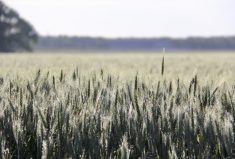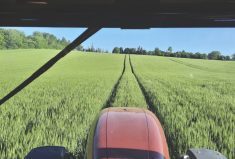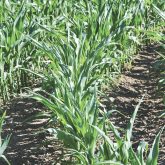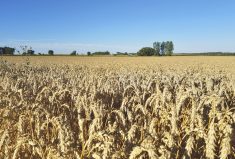Farmers in Saskatchewan and Alberta recently had the opportunity to learn hands-on about how their grain is graded after delivery to their local elevator.
In July, grain-grading seminars were held for farmers in Yorkton and Swift Current, Sask. for the first time as a joint effort between the Canadian International Grains Institute, Canadian Grain Commission and Saskatchewan Wheat Development Commission (Sask Wheat), says Dean Dias, Cigi’s director of value chain relations.
A workshop was also held in Vermilion, Alta., hosted by the Alberta Wheat Commission. AWC conducted its first grain grading session for farmers in Olds in 2015.
Read Also

Producers aren’t panicking over tariffs and trade threats
The influence of tariff and trade uncertainity on farm business decisions.
“Organization was done by Cigi, and the CGC was invited to conduct the grading demonstrations and brought in samples showing the different grades and degraded wheat,” says Dias. “CGC staff were brought in from Weyburn and Saskatoon for the Saskatchewan seminars and Calgary for the Alberta workshop.”
He says that in Saskatchewan, in addition to hands-on grading demonstrations, presentations covered an update on Sask Wheat and Cigi activities, and the CGC’s wheat class modernization initiative.
Plans for the grain grading workshops have been ongoing for a couple of years, says Dias, adding that more workshops will be held. “Producers have been asking a lot of questions about grain grades. The biggest concern has been that at harvest the grain looks great but when they take it to the elevator they aren’t getting the grade they expect.”
Dias explains that the process is not just about the grades but how the grain affects the quality of flour and end-use products, and that a certain amount of damage can cause performance problems. Cigi technical staff gave presentations explaining the effects of degrading factors on end-product quality.
John Wozniak, a farmer who is also a director with the Alberta Wheat Commission, says he took the workshop because he wanted to find out why he thought his grain looked better than the grade assigned at the elevator.
“After 32 years of grain farming I never questioned the grading system till last year,” he says. “Now I understand because they look at factors like frost damage, colour, mildew, sprouting — there’s a whole combination of things, like weather patterns that can affect it. You can have light frost (damage) but buyers may not want frost at all because of the way it affects the quality of the dough.”
Glenn Tait, a farmer and director with Sask Wheat, says he also wanted to know more about grain grading and what to look for in his samples.
“We’ve all got a biased opinion of our own grain samples,” Tait says. “We want to be able to tell what the grading or downgrading factors are so if a sample looks a little rough we know why it can still make a No. 1 or understand if it has quality damage that isn’t immediately evident. We should be trained in what to recognize.”
He says that farmers should also be reminded that they have the option to appeal a decision on the grade of their grain made at the elevator with the CGC.
Randy Dennis, chief grain inspector for Canada, says the workshops provided producers with invaluable information. “The producers will now have a better understanding of how quality is assessed in the grading system, how to recognize and assess individual grading factors, the importance of and manner in which to collect a representative sample of their grain, and knowledge that there is an arbitration method if there is a disagreement on grade, dockage, etc. when they deliver to the primary elevators.
“What tied a lot of this together were Cigi staff explaining the relationship between grading factors and the impact on milling and baking, essentially demonstrating there is sound reasoning why our system operates the way it does.”















